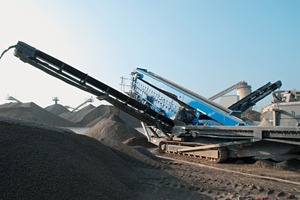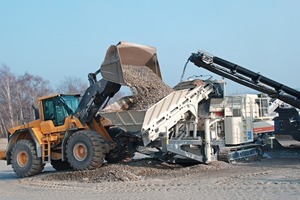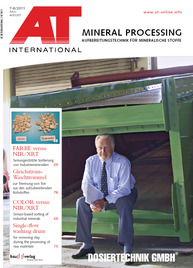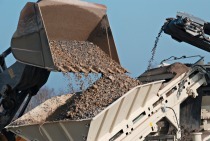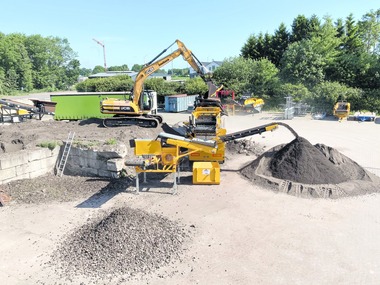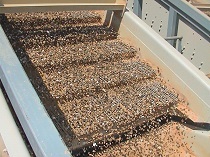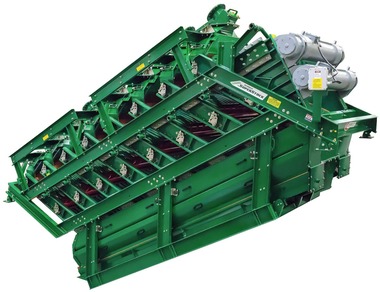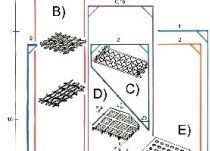Screening in three fractions
The Wuppertal-based Oetelshofen limestone works supply products ranging from bright white powdered quicklime to solitary limestone of several tons already in the fourth generation. The mineral and special mixtures of the producer in the Bergisches Land are processed in the glass, plastics, steel and iron or food industries according to different specifications. In order to always be able to meet the many requirements, the company places its trust in state-of-the-art solutions as regards blasting, crushing, screening and burning. Just recently the first crawler-mounted McCloskey triple-deck screening plant, type S190, in Germany (Fig. 1) started operating on the company’s premises supervised by the partner company Amiro GmbH.
The flat-deck screening plant launched by APEX-LIEBEN, a dealer in construction machinery and equipment from the Lower Rhine, has raised the bar of international standards also in this country. The discharge height of up to 5.1 m as well as the optional radio control are specific advantages as regards the flexible use of the S190. If required, the plant can simultaneously screen several fractions via one up to three discharge belts – and this with high throughputs. As a local operator Amiro is not only in a position to produce an individual fraction of sand with a particle size of 0/5 mm for steel production, but, in particular, they focus on the production of chipping fractions of 5/8, 8/11 and 11/23 mm in one operation. Frequently it is a question of the highest throughputs sometimes fed by a gyratory crusher, type Metso 200 HP, (Fig. 2). With its large inlet opening, the hydraulic drive and variable adjustment of the required speed, this screen is able to process feed material and oversize. Due to the ideal combination of the crusher with the screening plant at this location, about 180 tons of the most different finished products could be manufactured within only one hour.
High separation performance under deadline pressure
In the meantime the mobile screening plant S190 from Amiro has proved a success also for other separation tasks in the Rhineland. For example, it is used in road construction to separate broken asphalt layers. Afterwards the asphalt is used again for road construction as recycling material. In this case the task specification was to produce a qualitatively clearly defined fraction of 0/3, 3/8 and 8/11 mm. This is a task, which the S190 easily handles in one operation. Rolf Lieben, managing director of APEX-LIEBEN, is convinced that the mobile triple-deck screening plant will soon gain acceptance in Germany due to its flexible possibilities of use and its interesting price-performance ratio. “It gains more and more acceptance with companies that want to produce more than one or two fractions in large quantities under deadline pressure,” explained Rolf Lieben.
Another advantage of the S series with a weight of 36.5 tons from McCloskey is the mobility. It is not necessary to remove the railings for transport. After a maximum break of one hour, screening can be restarted at any time.
The above-average width of the lateral belts (2 x 80 and 1 x 50 cm) makes it difficult for critical materials to be conveyed to float off. In comparable screening plants this may lead to major problems in similar situations. The feed belt with a width of 1.2 m ensures a widespread distribution of the material to be screened. Wider chutes contribute to timely prevention of imminent blocking in the conveying flow.
A quick-change system for wedges makes it possible to easily replace the screen surfaces at any time. Practical features, such as the hydraulically coupled screen tray, which alone in the upper deck has a dimension of 6.1 x 1.5 m, favour the flexible separation of a wide choice of materials: from rock and coal to humus or wood chips, there are almost no limits as regards the application possibilities.

